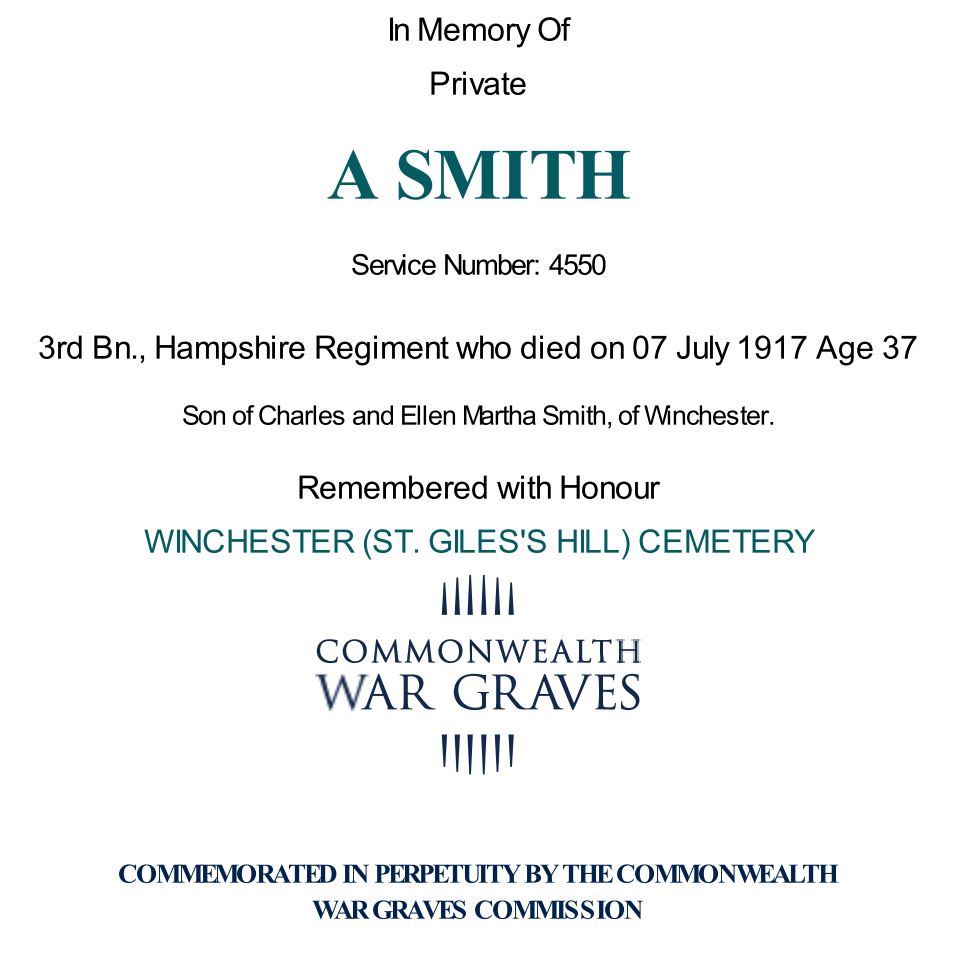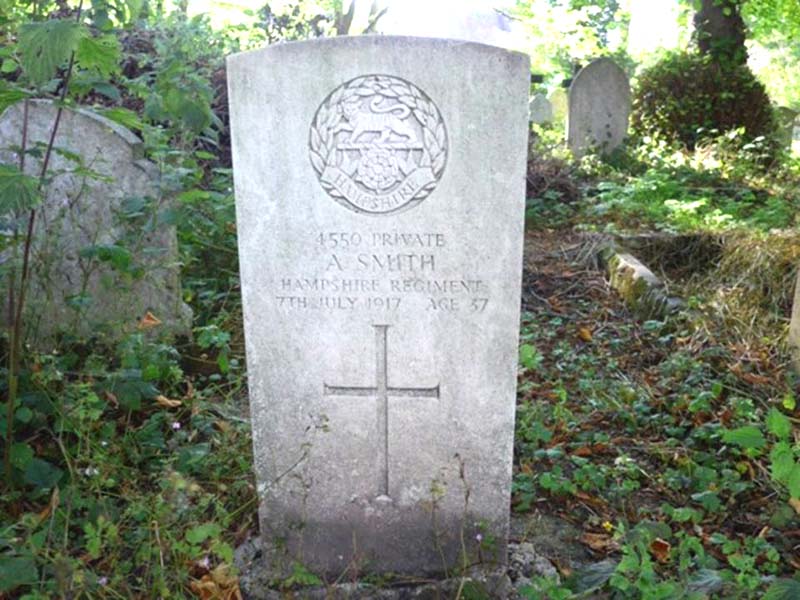
Alfred James Smith was born to Charles and Martha Smith in 1881 in Winchester. In the same year, records show that his family were residing at Colebrook Place, Winchester. By the time of the UK Census of 1891, the family had moved to 70 Wales Street, Winchester, Hampshire. Ten years later, Alfred aged 18 years, was working as a labourer painter and was still living with his family at 6 The Weirs, Cheesehill, Winchester, Hampshire. The UK Census 1911 shows Alfred still working as a labourer builder and living at home with his ageing parents at 44 Water Lane, Winchester, Hampshire.
At some point Alfred had served with the Royal Garrison Artillery Militia, a fact noted on his Army Reserve (Special Reservists) Attestation Paper, dated 31 August 1914. Private Alfred James Smith (4550), Hampshire Regiment (Special Reserve). On the 8th of September 1914, he was posted to the 10th (Service) Battalion.
Hampshire Regiment
10th (Service) Battalion was formed at Winchester in August 1914 as part of K1 and moved to Dublin, attached as Army Troops to the 10th (Irish) Division. Moved to Mullingar in September. In March 1915 it moved to the Curragh and transferred to 29th Brigade in the same Division. Moved to Basingstoke in May 1915 before sailing from Liverpool on 7 July 1915 and going via Mudros, it landed at Gallipoli 6th August 1915. Then on 6 October 1915, it landed at Salonika.
The 3rd (Reserve) Battalion was formed at Winchester in August 1914. It was a depot/training unit, that remained in the UK throughout the war. Moved on mobilisation to Parkhurst (Isle of Wight) and in January 1915 to Gosport for duty with Portsmouth Garrison.
Private Smith’s army records show that he went sent abroad with the Mediterranean Expeditionary Force (MEF) on 7 July 1915 and returned home on 16 October 1915. On his return, he was posted to the 3rd Battalion Hampshire Regiment where he remained until discharged on 8 March 1916.
He was discharged from ‘H’ Company, 3 Battalion Hampshire Regiment, as “no longer physically fit for war service. His pension records show that his cause of discharge was a “gunshot wound, left wrist”. The Medical Board (28 January 1916) had noted ‘In action 9th August 1915 – Dardanelles – Loss of power in all the fingers and thumb. Unable to grip anything, make a fist or pick up anything. The hand is practically useless. Permanent”. Private Smith was granted a pension as a result of his injuries (18s 9d) that was paid up until his death on 7 July 1917 aged 36 years.

Note: Alfred Smith’s brother, Edward George Smith, also served in the First World War in the Royal Field Artillery. Amongst his army records is an Army Telephone Message dated 20 May 1917 where Edward requests an extension of leave as his brother is dying. An accompanying letter dated 21 May 1917 to the Hampshire War Pensions Local Committee that notes his brother, Alfred, is a discharged soldier and has no money.
Driver Edward George Smith (84917), D Howitzer Battery 46 Brigade 14th Light Division was captured as a prisoner of war at Moy, France on 21 March 1918. He remained in captivity until the end of the war.
Thanks go to Stuart Adlam from the CWGC for supplying the above information.
Also: Reference: The book, “Debt of Hour (Winchester City’s First World Dead)” by Jen Best.
Don’t hesitate to get in touch with Dave Stewart Email dave@stgileshill.org.uk if you have any questions, corrections or additional information that could be added to this page.
